The Government’s favoured modellers appear to have settled on a figure for the greater infectiousness of the Delta (Indian) variant: a spanking 60%. Reuters reports.
Neil Ferguson of Imperial College London told reporters that estimates of Delta’s transmission edge over Alpha had narrowed, and “we think 60% is probably the best estimate”.
Ferguson said that modelling suggested any third wave of infections could rival Britain’s second wave in the winter – which was fuelled by the Alpha variant first identified in Kent, south east England.
But it was unclear how any spike in hospitalisations would translate into a rise in deaths, as more detail was needed on how well the vaccine protects against serious illness from Delta.
“It’s well within possibility that we could see another third wave at least comparable in terms of hospitalisations,” he said.
“I think deaths probably would be lower, the vaccines are having a highly protective effect… still it could be quite worrying. But there is a lot of uncertainty.”
Ferguson isn’t the only one making such doom-laden predictions. The usually more sanguine Philip Thomas of Bristol University is also predicting an “enormous” third wave in the summer. It will be “far bigger than the second”, he says, because of the Delta variant. “There is no hiding place. Either you’ve had the virus or been vaccinated, or you are pretty likely to get Covid this summer.” Ah, so another model that doesn’t factor in prior immunity or T-cells. Professor Thomas writes:
But the Indian variant, which now accounts for most Covid infections, has changed everyone’s calculations. Back in April, my model pointed to a fairly negligible rise in infections after lockdown. Not any more. I assume someone with the Indian variant will pass it on to 6.8 others in a fully susceptible population, a far higher multiple than the Kent variant (4.5 others) and the original (three others).
If the Indian variant does spread this quickly (my estimate is in line with the figure quoted by the Government) then it would quickly seek out the one-in-three Britons who are still susceptible: mainly the not-yet-vaccinated. My model shows an enormous final wave, peaking during the middle of next month at anywhere between two million and four million active infections. So we could well be in for even more Covid infections than in the January wave which forced us into a third lockdown. There is no hiding place. Either you’ve been vaccinated or you are pretty likely to get Covid this summer.
What about the vaccines? They won’t stop the huge wave, he argues, though they will limit the damage.
How can this be, you might ask, given the success of vaccination? Because it will spread among the young. Only about a third of the under-forties have been jabbed so far, with just 14% double-jabbed. A good number (my model estimates about one in five) will not come forward to be jabbed at all. We may have protected those most at risk – but the young, who are least likely to be seriously ill, are still susceptible. There are more than enough of them to facilitate a third wave of Covid cases that will be far bigger than the second.
For weeks, Britain has enjoyed the lowest Covid levels in Europe. But we should brace ourselves for worrying headlines. Holiday plans could be affected: countries that are (rightly) fearful of the Indian variant may well want to restrict entry to people from the UK. There will be cries to lock down again. By my estimates, the R-number (the rate of growth of the virus) is already higher than when the Kent variant was at its peak.
Alarming stuff, and Ferguson thinks it’s even worse, Thomas notes, with every infected person infecting nine others. Thomas suggests that Bolton last month gives a glimpse of the third wave, when it saw “the number of confirmed Covid cases surge back to where it was in January”, though with hospitalisations far fewer and among younger people. Not mentioned, though, is that the Bolton “cases” surge in May was largely driven by a surge in testing.
We won’t have to wait long to find out if Professor Thomas is right, as he claims that this enormous (but not very deadly) wave will peak next month, and that the current restrictions aren’t doing anything to stop it: “The model shows that the virus is growing exponentially already; the final step on the roadmap out of lockdown makes little difference. We are already mixing about as liberally as we would otherwise do on a full reopening.”
I admit that I have been a bit surprised by the late spring and early summer infection spike we’re currently seeing. Oddly, it happened simultaneously in many regions including the North East and South East around the end of May, as the latest ZOE data shows. In most places it was too late to be explained by the May 17th lockdown easing (or, in the case of the North West, too early).
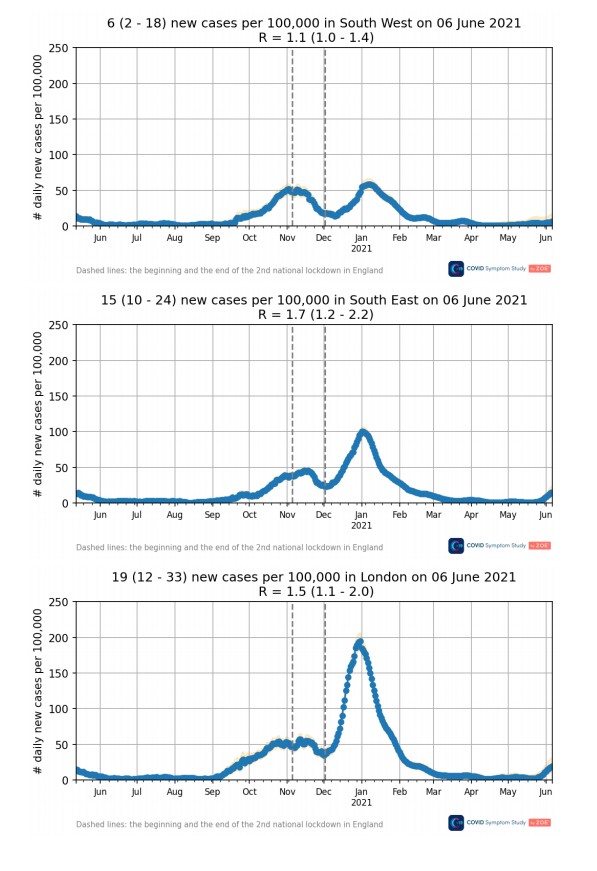
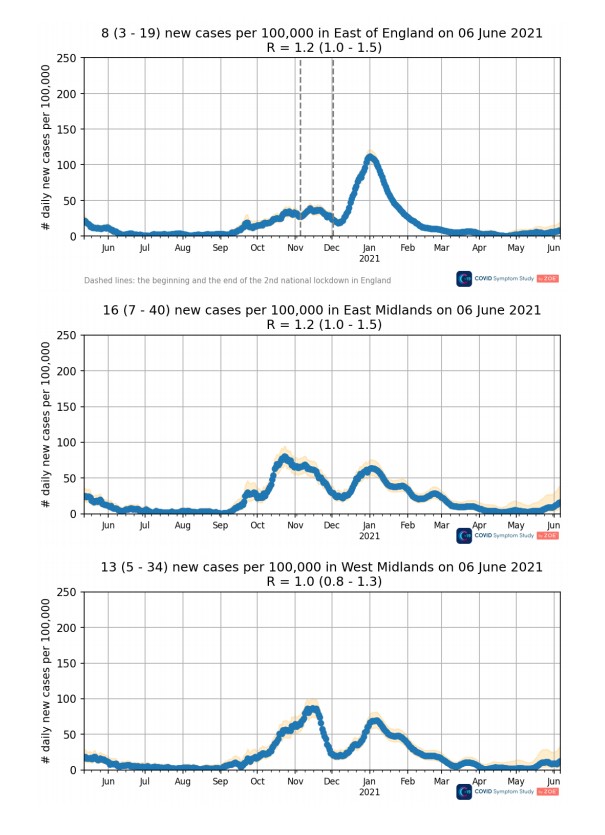
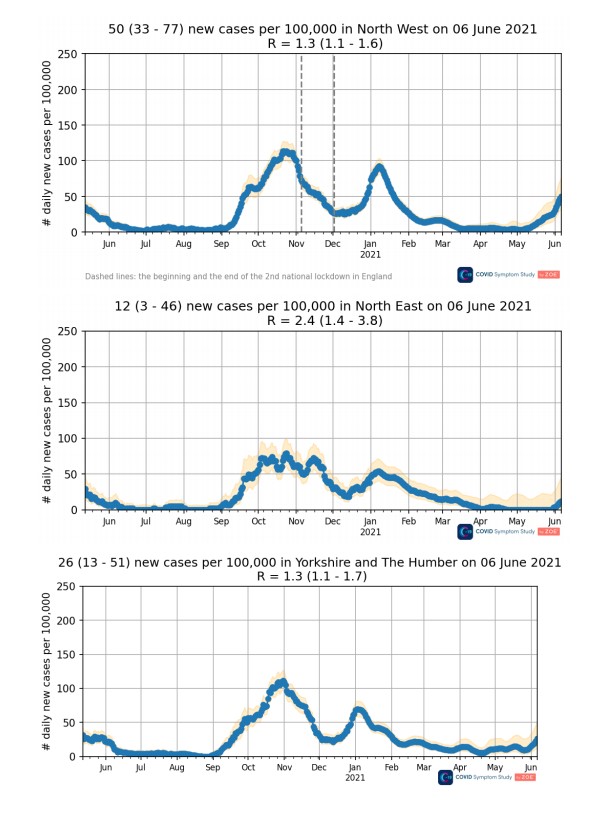
Unlike the modellers of doom, I would expect this spike to fizzle out pretty quickly, it being summer, and if the experience of the reopened American states is anything to go by. I guess we’ll find out soon.
But in terms of the Delta variant being hyper-infectious, what I want to know is why it only seems to be highly infectious in the U.K. Everywhere else (except India, of course) it’s hardly making any impact, despite having been around as long as it has in the U.K. Here are some of the latest graphs from CoVariants, with the Delta variant in dark green and Alpha (British) variant in red.
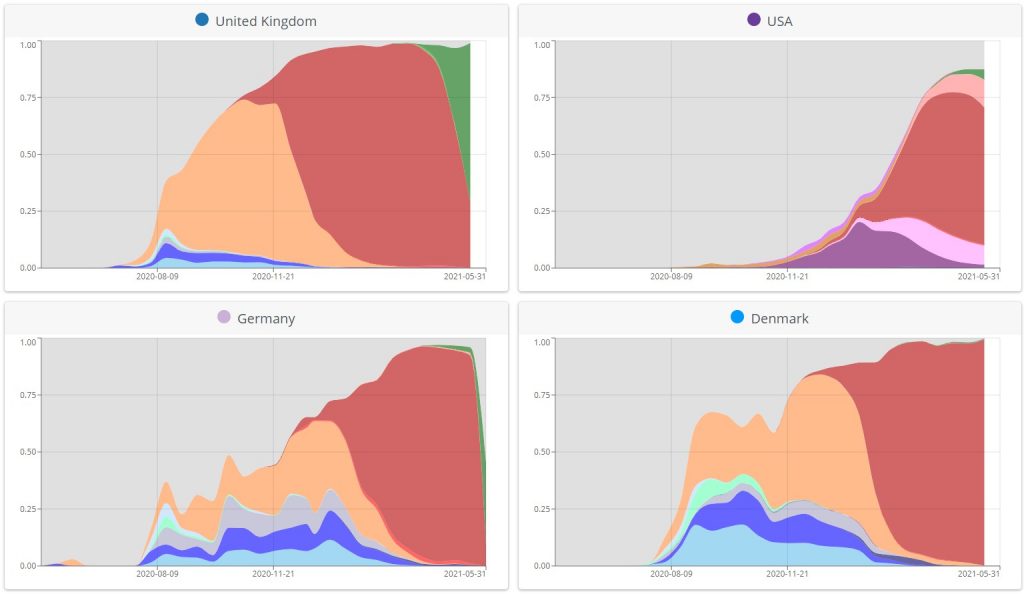
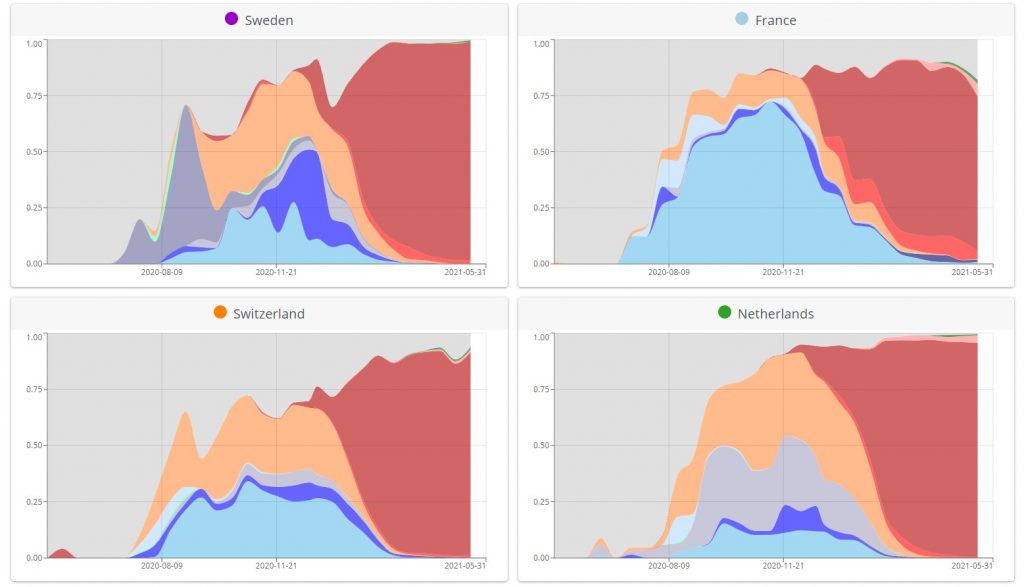
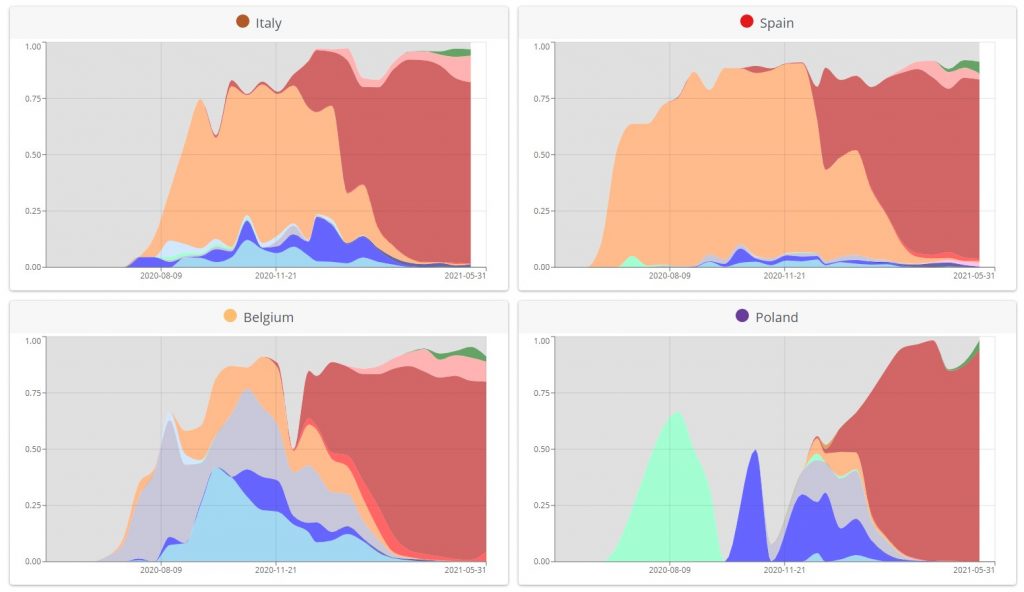

As you can see, in countries other than the U.K. the green Delta stripe has stayed relatively small so far. How can this be if it really is 60% more infectious?
The next few weeks will certainly be interesting, as we watch to see how big the Delta variant spike in the U.K. gets and what the variant does in other countries. But on the evidence right now, I see no reason to worry. And I don’t mean, don’t worry we’ve got vaccines. I mean, vaccines or not, this virus has already done its worst, new variants will not cause a repeat of spring 2020 (look at America), and next winter will be largely like all the others.
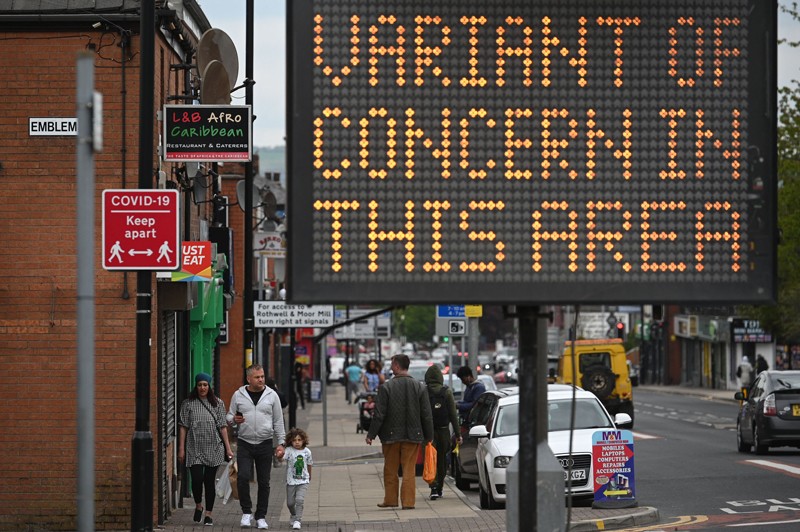











To join in with the discussion please make a donation to The Daily Sceptic.
Profanity and abuse will be removed and may lead to a permanent ban.
Oh just feck off… You’re all off your fecking heads…
Not to worry Jon. Got you covered;
https://twitter.com/hunkiedorie/status/1694313824122187831/photo/1
Mate




Love it. Thanks Mogs.
Get a Tourette’s Syndrome diagnosis.
Claim that your medical condition prevents you from filtering your words and that you are pathologically incapable of not saying what you see.
Seriously, I do know of elderly folk with various forms of dementia and cognitive decline who just cannot take it in when someone in their family or who they know goes trans. Who is this Betty who has suddenly appeared? where is Brian, I want to speak to Brian but they can’t because Brian has become Betty! It is totally beyond many people with any sort of cognitive problem to make any sense of this.
Consequently this represents a clash of hate crimes, I would argue that it is a hate crime against people with cognitive problems for anyone in their acquaintance to go trans. If your mind is already confused, this is a step too far.
What happens when they *really* just don’t cut the mustard though??
https://twitter.com/OliLondonTV/status/1694421095531577774
A great way to react to something like this would be for all the women to withdraw voluntarily from the competition at the last minute. They guy could then cycle alone. Would make a great story and probably a quite effective one as well.
Truth hates no one, it’s just true. That the transgenderists try to criminalize making demonstrably truthful statements about them is a tacit admission that they don’t really believe in their shit, either.
When we have Sophie Cook advising the CPS, expect more of this pure insanity..
https://www.dailymail.co.uk/news/article-10878481/Fury-CPS-hires-transgender-activist-despite-posting-derogatory-tweets-women.html
What does he look like. Ffs ..
..
Come and arrest me, put me up against a wall and shoot me..
Please…
On her website, she says she is also a ‘LGBT & mental health campaigner’, a Royal Air Force veteran and ‘self-harm and suicide survivor’…..
What a shame…
Judging from some of the photos supplied above I would have thought there was going to be no issue in “Misgendering” these fellas !
I am going to identify as an ignorant old bu99er, do you think I will get away with it?
no real woman has ever identified as a woman.
https://off-guardian.org/2023/08/23/german-courts-are-going-full-dystopia/
A judge sentenced to prison for doing his job properly.